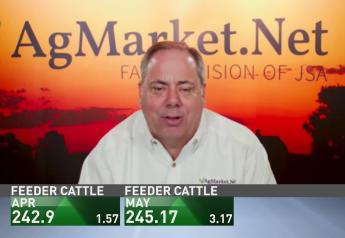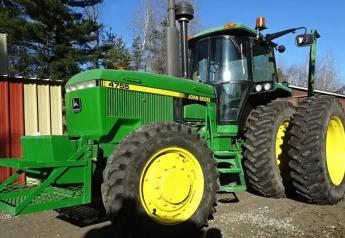Dear NY Times: Here’s Your Sign

Large signs in Yellowstone National Park warn tourists not to stop and approach wildlife. Big official signs. Some are not too subtle, such as: “Do Not Approach Wildlife (Including Squirrels),” “Our Wildlife Will Hurt You” and “Seriously, Keep Your Ass in Your Vehicle.”
As I know you are well aware, those signs don’t work. At least not 100%.
Between 1978 and 1992, bison attacks in Yellowstone injured 56 people and killed two. But the all-time “hold my beer” bison-tourist encounter fail award went to an Oregon man who was arrested and later sentenced to 130 days in jail for drunken behavior and harassing a bison.
Which might have been entertaining to watch because … well … I didn’t know it was possible to harass a bison.
As comical as such a drunken tourist-bison encounter might be, it’s on par with the New York Times attempt to harass Frank Mitloehner, a University of California–Davis professor and the director of the CLEAR Center (also known as @GHGGuru on Twitter) who is a prominent researcher of livestock greenhouse gas emissions.
Mitloehner is widely embraced by the livestock industries for using science to push back on critics who only see food animal production as an environmental disaster. You might recall it was Mitloehner who first called out the 2006 United Nation’s Food and Agriculture Organization report, “Livestock’s Long Shadow,” that labeled livestock’s contribution to global warming greater than “all of transport.” Indeed, Mitloehner was proven correct and even the U.N. report’s authors made corrections.
But it was too late. The cow, so to speak, was out of the barn.
Over the 16 years since Livestock’s Long Shadow, environmental activism has grown exponentially. Consumers are more aware of their environmental footprint, and many make purchases with that in mind. Indeed, most companies today have a CSO, or Chief Sustainability officer.
Science Speaks Volumes
Mitloehner is not critical of such efforts. He emphatically says he is not a “climate denier.” His mission, he says, is to help ensure that decisions are science-based. Which is why he started the Clarity and Leadership for Environmental Awareness and Research (CLEAR Center) at UC–Davis.
Here is what Mitloehner says about himself: “We are specialized in measurements and mitigation of greenhouse gases, volatile organic compounds, ammonia, hydrogen sulfide and particulate matter and the study of their effects on human and animal health and welfare. In short, our lab investigates the nexus of agricultural productivity and environmental sustainability.”
One of Mitloehner’s projects has involved applying science to our conversation around methane. Nearly all media reports about methane tend to label it as the boogeyman of GHGs, one that could be corrected if the world would just stop eating meat.
The CLEAR Center’s production of “Rethinking Methane” is a must watch. It’s just five minutes but explains how livestock production can actually become a climate solution. Crazy, I know. But Mitloehner points out that methane stays in the atmosphere about 10 years while carbon remains in the atmosphere for thousands of years.
What does that mean? Consider your basic 10,000-head feedyard. It produces the same amount of methane that it did 10 years ago. But, because methane only remains in the atmosphere for 10 years, that feedyard is not adding any new methane to the atmosphere.
Alas, a lot of environmental activists don’t like logical thinking such as that. And Mitloehner has become a target of anti-livestock and anti-meat groups because of his research.
He says he has two goals: “One, to quantify how much of (livestock) emissions are scientifically quantifiable, and two, how to reduce those emissions.”
The New York Times Comes Knocking
Mitloehner’s success, of course, brings critics. Greenpeace, for instance, dug into the funding for Mitloehner’s work. Then, as if on cue, the New York Times assigned Hiroko Tabuchi the task of harassing Mitloehner.
Tabuchi is the newspaper’s climate and environment reporter with solid credentials. She was educated at the London School of Economics and Political Science, and she was part of the team that covered the 2011 tsunami and nuclear disaster in Japan for The Times that was named a finalist for the Pulitzer Prize for International Reporting.
But her harassment of Mitloehner went about as well as a drunken tourist in Yellowstone.
Why? Well, as Mitloehner says: “My critics don’t question my science because they can’t. So, they resort to attacking me.”
In this case, Tabuchi never questions Mitloehner’s research. But she notes Mitloehner gets a lot of his funding for research from the livestock industry. For instance, the CLEAR Center received funds from the American Feed Industry Association and the California Cattle Council, both legitimate non-profit industry groups.
But the way Tabuchi describes their relationship with Mitloehner makes you think those livestock groups are run by a Jimmy Hoffa acolyte.
Which begs the question – just who does the New York Times expect to fund research on cow emissions? The livestock industries probably want to borrow a sign from Yellowstone in response to the Times: “Seriously, Keep Your Ass in Your Vehicle."







